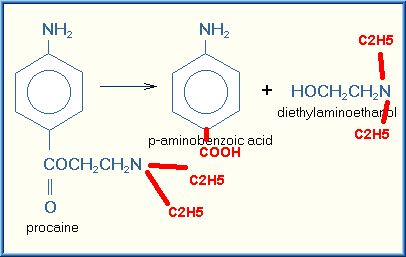
Quiz question:"Where are microsomes made: brain, liver, kidney, laboratory."
In the module I explain how microsomes are made. The enzymes are located in
the endoplasmic reticulum (ER), long tube-like structures within the cell. In
order to make microsomes, you must smash the cells and the ER, and then centrifuge
the fluid to get the microsomes. Microsomes are just little pieces of the ER,
but they do not exist in nature, only in the lab. All cells have and ER and
some xenobiotic metabolizing enzymes. The liver has much more of these enzymes,
so liver is used to make microsomes.
Q. Isn't a hematoma a bruise and therefore benign? Especially since "The
suffix"-oma" indicates a benign tumor"?
A. Yes, a bruise is a hematoma and is usually benign, but a hematoma in the
brain may be fatal. The point is "oma" indicates a tumor or swelling
and not necessarily cancer.
Q. I am obviously misunderstanding something on adducts and electrophiles.
The "R's" are bases "with nitrogen and oxygen atoms, both of
which have some electrons to give away". Then "chemicals that would
like some electrons" are electophiles. Once attached to the DNA, we refer
to the R as an "adduct." So now why aren't the chemicals becoming
adducts also electrophiles?
A. The term "R" is never used for the nitrogenous bases in DNA. "R"
is a very general term in organic chemistry, when you are interested in some
particular part of a molecule, often these are very complicated molecules but
we are only interested in a small portions, the symbol "R" is used
to indicate there is more there, but it's not important to what you are discussing.
You can think of "R" in that sense as the "the rest of the molecule."
"R" almost always means a hydrocarbon (carbon and hydrogen) molecule,
it would not be used for the nitrogenous bases, that are heterocycles, i.e.,
have atoms other than carbon, in the ring.
Q. I am not really certain what a compendium is. Does it need to be from a reputable sight (e.g. EPA, Scientic Agency) or can it be from an advocacy agency such as Fluoride Alert. I have attached a hyperlink to just that sight that is nothing but list of reference to some peer reviewed some not peer reviewed articles that object to the used of fluoride in the water supply. Can this list of references be considered a compendium? Not sure how I would use it but I am curious whether it would work or not.
A. I guess I use the word "compendium" as a type of "secondary literature." Secondary literature is "authoritative," just not original science. If the EPA publishes a list of numbers, that is absolutely authoritative, about the list itself. At the front of each new EPA regulation is often a lengthy forward or preface that reviews the research and regulatory history of the new regulation. This is a form or "review" literature that is authoritative, in the sense it is reviewing its own work. These generally are not accepted as "science" in the sense its conclusion, i.e, 50 ppb, is "science." But it is the law.
Generally, authoritative review articles are sponsored by a major journal. These are compendiums and are considered authoritative, in the sense a reputable journal would expect the author, who is a acknowledged expert, to review all the applicable primary literature. Textbooks are also compendiums, although the review is economic based, the publisher wants to use experts who are acknowledged in the field, and to avoid blunders, the publisher will hire competent reviews of the various chapters. Textbooks are considered authoritative, if they are not out of date.
Reviews by an industry or anti-industry are generally not considered authoritative. The supposition is that they will choose, from the vast body of literature available in some subjects, only the articles that support their case. These are really tertiary literature. They are often a valuable source, for example they may have a nice layout of technical points, and a lengthy bibliography, but the assumption is that there are things not in the bibliography that are needed for a balanced view on the subject.
